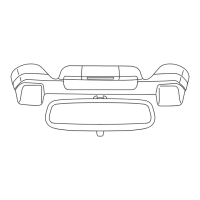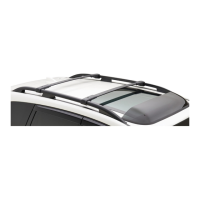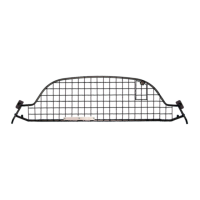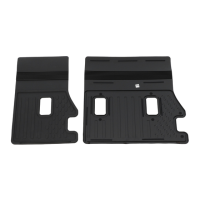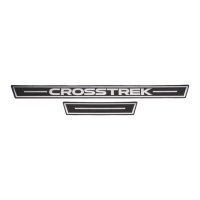Do you have a question about the Subaru Ascent 2019 and is the answer not in the manual?
Functions of the key fob including locking, unlocking, and panic alarm.
Adjusting power driver's seat functions and saving seat positions.
Using seat controls for adjustments and operating ventilated seats.
Instructions for operating front and second-row seat heaters.
Steps for accessing, exiting, and folding the third-row seat.
Diagram showing the location of various controls and indicators on the instrument panel.
Overview of controls located on the center console, including climate and infotainment.
Overview of tachometer, ECO gauge, trip meter, and odometer.
Explanation of common warning lights like seatbelt, SRS airbag, security, and fuel level.
Understanding the speedometer, fuel gauge, and tire pressure monitoring.
Explanation of lights for VDC, ABS, Lane Departure, and Auto Vehicle Hold.
How to adjust the tilt and telescopic steering column.
How to activate and deactivate the heated steering wheel feature.
Adjusting power exterior mirrors and using the cabin view mirror.
Using i/SET controls to navigate the combination meter display.
Control for headlights, fog lights, and interior illumination brightness.
Explanation of the AUTO mode for headlights and automatic illumination.
Using windshield wipers for intermittent, low, high speeds, and washer fluid.
Operation of rain-sensing wipers and daytime running lights.
Overview of automatic climate control system with temperature and fan speed adjustments.
Using manual mode for A/C, MAX A/C, air flow modes, and defrost.
Operating the rear climate control panel and locking features.
Understanding Normal Mode and Manual Mode for the CVT transmission.
How to open, close, tilt, and operate the moonroof and sunshade.
Using HomeLink for garage doors and the smart rearview mirror.
Explanation of lower-left instrument panel switches for rear gate, VDC, and blind spot detection.
How to apply/release the parking brake and use X-MODE for terrain control.
Using Auto Vehicle Hold for stopping and paddle shifters for gear changes.
Using paddle shifters to select gears in Manual Mode.
Proper installation and use of the LATCH system for child safety.
How child safety locks on rear doors function and prevent opening from inside.
Location and access for the spare tire and jack tools.
Recommended towing methods for AWD vehicles and roadside assistance contact.
Information on fuel type, octane rating, and fuel tank capacity.
How to open the fuel filler lid.
Recommended engine oil types, viscosity, and capacity.
Information on TPMS and tire pressure specifications.
Identification of key components in the 2.4 L engine compartment.
Functions of the key fob including locking, unlocking, and panic alarm.
Adjusting power driver's seat functions and saving seat positions.
Using seat controls for adjustments and operating ventilated seats.
Instructions for operating front and second-row seat heaters.
Steps for accessing, exiting, and folding the third-row seat.
Diagram showing the location of various controls and indicators on the instrument panel.
Overview of controls located on the center console, including climate and infotainment.
Overview of tachometer, ECO gauge, trip meter, and odometer.
Explanation of common warning lights like seatbelt, SRS airbag, security, and fuel level.
Understanding the speedometer, fuel gauge, and tire pressure monitoring.
Explanation of lights for VDC, ABS, Lane Departure, and Auto Vehicle Hold.
How to adjust the tilt and telescopic steering column.
How to activate and deactivate the heated steering wheel feature.
Adjusting power exterior mirrors and using the cabin view mirror.
Using i/SET controls to navigate the combination meter display.
Control for headlights, fog lights, and interior illumination brightness.
Explanation of the AUTO mode for headlights and automatic illumination.
Using windshield wipers for intermittent, low, high speeds, and washer fluid.
Operation of rain-sensing wipers and daytime running lights.
Overview of automatic climate control system with temperature and fan speed adjustments.
Using manual mode for A/C, MAX A/C, air flow modes, and defrost.
Operating the rear climate control panel and locking features.
Understanding Normal Mode and Manual Mode for the CVT transmission.
How to open, close, tilt, and operate the moonroof and sunshade.
Using HomeLink for garage doors and the smart rearview mirror.
Explanation of lower-left instrument panel switches for rear gate, VDC, and blind spot detection.
How to apply/release the parking brake and use X-MODE for terrain control.
Using Auto Vehicle Hold for stopping and paddle shifters for gear changes.
Using paddle shifters to select gears in Manual Mode.
Proper installation and use of the LATCH system for child safety.
How child safety locks on rear doors function and prevent opening from inside.
Location and access for the spare tire and jack tools.
Recommended towing methods for AWD vehicles and roadside assistance contact.
Information on fuel type, octane rating, and fuel tank capacity.
How to open the fuel filler lid.
Recommended engine oil types, viscosity, and capacity.
Information on TPMS and tire pressure specifications.
Identification of key components in the 2.4 L engine compartment.
| Horsepower | 260 hp |
|---|---|
| Torque | 277 lb-ft |
| Transmission | Continuously Variable Transmission (CVT) |
| Drivetrain | Symmetrical All-Wheel Drive |
| Fuel Economy (Combined) | 23 mpg |
| Towing Capacity | 5, 000 lbs |
| Cargo Space (Behind Third Row) | 17.8 cubic feet |
| Cargo Space (Behind Second Row) | 47.5 cubic feet |
| Cargo Space (Behind First Row) | 86.5 cubic feet |
| Roof Rails | Standard |
| Engine | 2.4L Turbocharged |
| Seating Capacity | 7 or 8 |
| Cargo Cover | Available |
| Cargo Net | Available |
| Cross Bars | Available |
| Trailer Hitch | Available |

